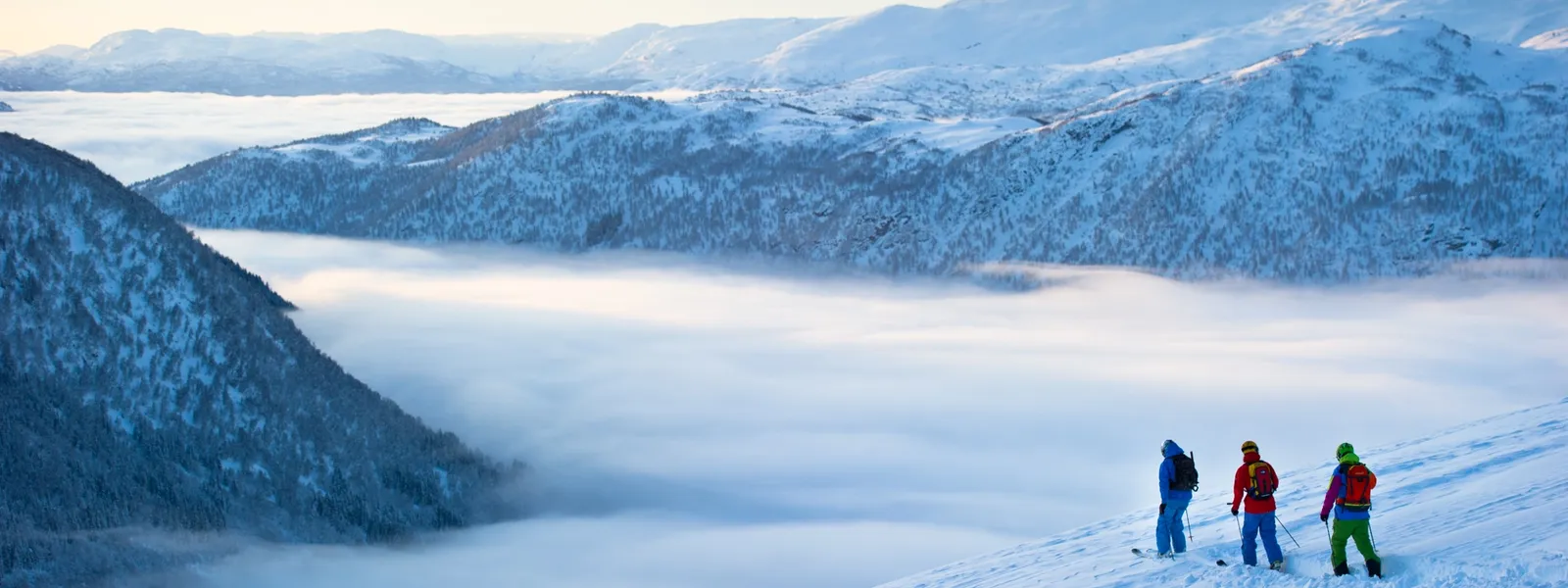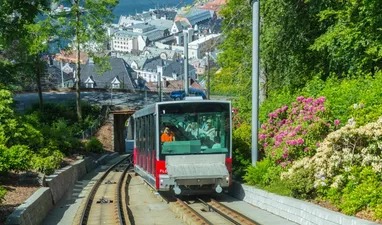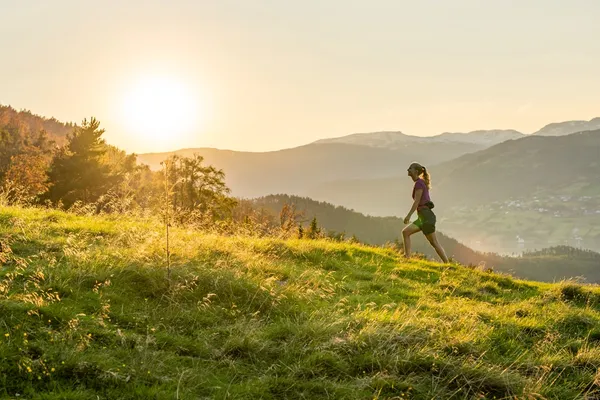
Foto: VERI Media / FjordNorway.com
Translated from the original article on Norway's Best.
The landscape affects the weather and climate
Because of Norway's geographical conditions, the weather and climate are characterised by great variations in the different regions of the country, as well as through the different seasons.
Norway is a long, narrow country with a long coastline stretching from north to south. Western Norway has many fjords and bays, and many high and low places. This can affect the rain, wind and temperature in the areas. You should always bear in mind that the weather and temperature can change quickly, especially in the mountains.
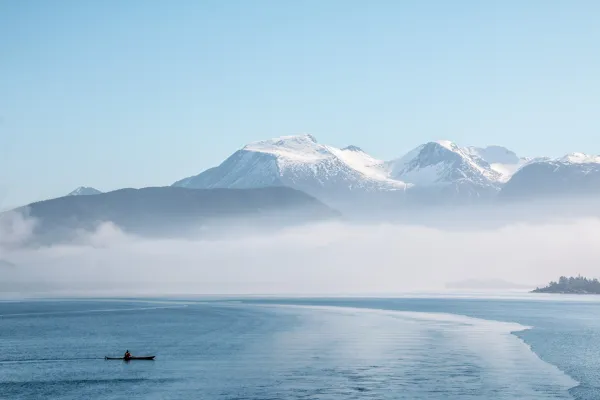
Foto: Skiinformarmatie.nl / FjordNorway.com
Fact or fiction?
Norway isn't always cold. Myth dispelled. Fact: The climate in Norway is milder than its northern location suggests, thanks to the warmth of the Gulf Stream. Of course, it can get cold, but it can also get hot!
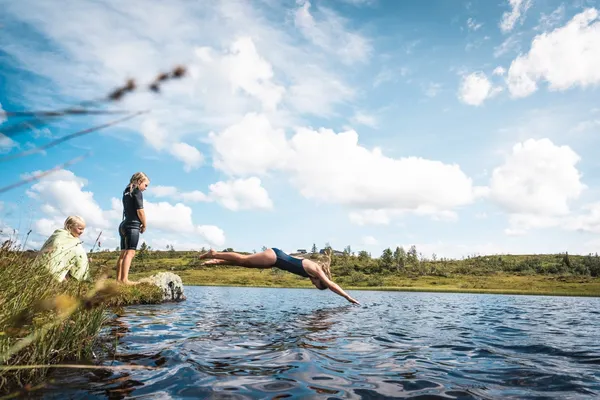
Foto: Jon Hunnålvatn Tøn / Voss Resort
Spring
March, April and May are considered to be the spring months in Western Norway. The season is filled with awakening wonders, a time where nature bursts into life. We feel the days getting longer and lighter, the snow melting, migratory birds returning, and the first flowers peeking through the ground.
In Western Norway, March and April usually feel and look much like winter. Skiing in the mountains is still a popular activity during these months. In the fjords, the first flowers may have arrived around this time, although the grass might not turn green until May. In May, the many fruit trees in Fjord Norway are in bloom, the lambs are frolicking, and mountain water cascades down the valley sides.
May 17th is a lively day in Norway as we celebrate our National Constitution Day with parades, flags, music and lots of food and ice cream. People dress up in their finest clothes, many of them wearing the Norwegian folk costume called the “bunad”.

Foto: Robin Strand / Fjord Norge
Summer
June, July and August are the summer months in Western Norway. The days are at their longest, the landscape at its greenest and the temperatures are at their most pleasant. The light, endless evenings attract plenty of outdoor activities in the beautiful natural surroundings: kayaking, hiking, cycling, swimming, and late-night barbecues as the sun sets. However, the weather can still produce some surprises. So be prepared, check the weather forecast, and bring warm clothes as a backup, if necessary.
June 20 – 22nd are the longest days of the year with sunrise in Flåm at approximately 04.00 and sunset at 23.00. On 23 June, Norway celebrates Saint John's Eve, more commonly known as Midsummer's Eve. Bonfires are lit in every village, town and city and people gather to celebrate the midsummer evening together.
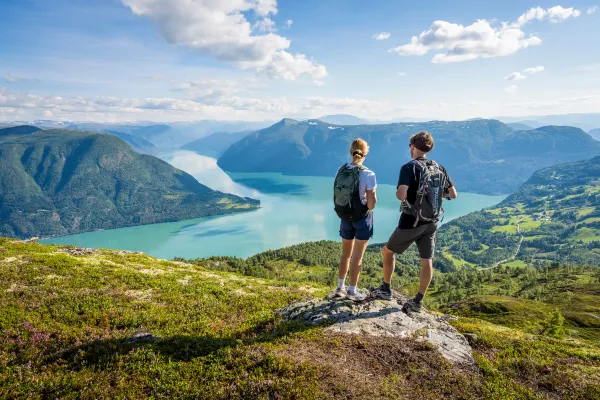
Foto: Vegard Aasen / VERI Media / FjordNorway.com
Autumn
September, October and November make up the autumn season in Western Norway. Autumn is the golden time of year in Norway, with leaves in a variety of colours, pure, clear air and tasty fruits, berries and mushrooms. During the first months of autumn you can spot the change in colours from bright green to beautiful yellow, orange and red. A feast for the eyes!
Autumn is a great time to head into the mountains, take a bike ride or stroll by the fjords or in the valleys. The famous Rallar Road is a popular attraction in the autumn season, offering magnificent views of waterfalls and lush nature in changing colours. A spectacular combined trip is to enjoy the natural scenery on a train ride on the Flåm Railway from Flåm to Myrdal, then rent a bike and cycle back from Myrdal and down the last part of the Rallar Road to Flåm.
During the first months of the autumn season, the temperatures can still be quite warm and pleasant, sometimes even as high as in the summer months. But it can also be wet and chilly, so it's a good idea to wear multiple layers and warm clothing and have an umbrella at hand. In November, winter is fast approaching with the first snowfall, and it's time for cosy log fires and indoor activities.

Foto: Vegard Aasen / VERI Media / FjordNorway.com
Winter
December, January and February are the winter months. In December, we celebrate Christmas and the whole month is mostly devoted to preparing for Christmas festivities. The weather in December is usually not as stable as January and February, which are the proper winter months, with glistening snow and freezing temperatures. This is a beautiful time of year, with a bluish light, snow-clad mountains and frozen waterfalls. All you need is need warm clothing for a ski trip or for playing in the snow.
Winter offers many activities with and without skis in the fjords, on the mountains and at the ski resorts. Snowshoeing is a fun and popular activity and a wonderful way of enjoying the snow without skis. Another tip is to head to Stegastein Viewpoint for a breathtaking view of the snow-covered mountains and the deep blue Aurlandsfjord.
After a day outside in the cold, you can relax with hot chocolate or “gløgg” (mulled wine) in front of the fire. A widely-known secret is that Norwegians light fires and candles whenever they have an opportunity to compensate for the shorter days. A very cosy custom, we can assure you!
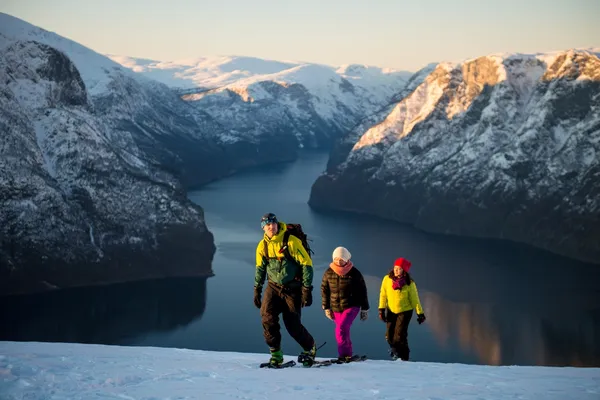
Foto: Sverre Hjørnevik / fjordnorway.com
